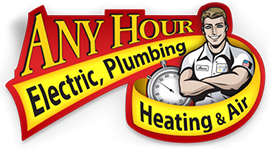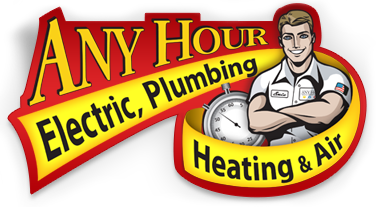Catch Those Leaks! An Easy 7-Point Inspection Could Save You Thousands
Today we're giving you seven things you can do to identify any sneaky or not-so-sneaky leaks that could be costing you thousands of dollars--and wasting thousands of gallons of water in your home!
Do you have faucets that go drip in the night? Do you have a toilet running so incessantly it could qualify for an ultra marathon? Do you have a tub or sink that drains so slowly it’s causing backups? If the answer is yes, it sounds like you have some drains trying to tell you something. Because not only are leaks in your toilets and drains wasting valuable resources, they're also costing you money. Those small leaks that seem like minor inconveniences can lead to larger, more expensive repairs.
Some leaks make themselves known by dripping, draining, running, or flooding. But there might also be leaks in your house that you aren’t even aware of, making trouble and causing problems. To help you identify some of these sneaky and not-so-sneaky leaks, we're going to walk you through a seven-point home inspection you can perform to help identify any areas that might need a fix before they become big problems.
1. SINKS
Watch your sink faucets for a few minutes to be sure that they don’t continue to drip while in the “off” position. If you have a leaky faucet, either call a trusted friend who knows how to repair home plumbing or call a licensed plumber to fix your leak. (Or, if you’re handy, a simple YouTube video search could help you make your own repair. You might find it's as easy as replacing a washer or tightening a screw) This very simple fix can save you up to 20 gallons of water per day! If you have a faucet that drips at a rate of one drop per second, it is wasting up to 3,000 gallons per year--and wasting you money.
Remember to also check underneath your sinks for leaks. Small leaks in the drains under your sink can lead to disaster down the road. In the short term, water damage could ruin your cupboards and flooring--but left untreated, this could lead to mold growth. Mold is toxic to humans and is extremely expensive to eradicate once it spreads throughout your home. Protect your home and your family by performing a quick inspection of your sinks for any leaks, big or small.
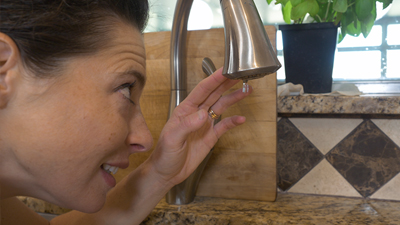
2. TOILETS
The leading culprit of water loss in homes is leaky toilets. One leaky toilet wastes up to 73,000 gallons of water per year! So, when you hear that toilet running, it's actually the sound of your water bill, slowly draining money from your wallet. Get your leaky toilet repaired immediately, and consider a low-flow toilet, if you haven't already got one in your home. A low-flow toilet could save you an additional 13,000 gallons of water per year!
When performing a check on your toilet, be sure to also check around the base of the toilet. If there is water or leakage around the base of the toilet, chances are good that your wax seal is bad. It would be a great time to get the wax seal replaced, either by yourself or a trusted plumber. Otherwise, this is one leak that could create incredibly expensive problems, including damage to flooring and subflooring, and even the ceiling, if the toilet sits on a second story or higher.
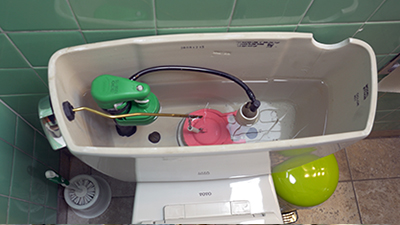
3. SHOWERS & TUBS
A shower leaking at 10 drips per minute is costing you more than 500 gallons per year. Make sure you don’t have leaky faucets in the bathtub or leaky showerheads in the shower. Minor leaks such as a shower leak account for more than 1 trillion gallons of wasted water each year. (How do cities and municipalities charge for water usage? Dollar per gallon rate?) Get those leaks fixed and it could save you up to 10% on your water bill.
Make sure to also check any drains to make sure they’re--well--draining. Take care of clogs and other obstructions for the prolonged health of your drains. Also, there could be some hidden, sinister reasons your drains are slow. Blockages, obstructions, corrosion, kinks, and breaks could all be reasons--with some potentially devastating side effects.

4. WATER HEATERS
Water heaters often sit in the basement or closet, quietly going about their business--until you have a reason to pay attention to them. And it only takes one cold shower to feel motivated to start investigating the water heater. By that time, you’ve already got a problem on your hands. Performing a quick inspection on your water heater periodically could save you from a disaster.
During your water heater inspection, determine if there is water or dampness present and whether or not it is actually coming from your water heater and not another appliance or a leaking overhead pipe. If you can determine you do have a leak, the best thing to do is have a trusted plumber come and check out your water heater. From minor leaks to major ones, a leaking water heater can cause damage to your walls and floors, plus mold and mildew growth. So it's always a good idea to have it checked out and fixed immediately. (Source: https://www.waterheaterleakinginfo.com/)
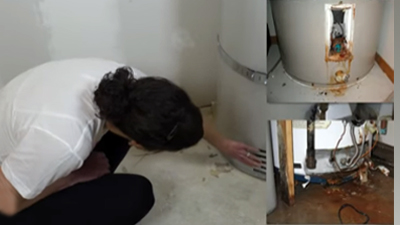
5. OUTSIDE SPIGOTS
Another leak hazard that often goes overlooked are the spigots on the outside of your home. Prone to freezing and breaking, these pipes and spigots see the very most extreme weather conditions--and the most extreme treatment. They can be damaged by lawn mowers, trimmers, or other yard tools and abused by kids looking for summer amusement. Therefore, it’s always a great idea to check on your outdoor lines to make sure they aren’t cracked, broken, or leaking.
A leaking or broken outside line or spigot could lead to serious damage to your property, if left unchecked. From wasted water and higher water bills to damaged foundations and flooded basements, this is another simple check you can perform that could potentially save you a lot of time, money, and stress.

6. APPLIANCES - FRIDGE, DISHWASHER, & CLOTHES WASHER
Run a quick check on your appliances to make sure all water lines are working properly. Check connections with the wall and the appliance to make sure those lines are secure. Also, check that you don’t have lines with tears or leaks that could potentially cause water damage to your home. Another thing to check is to make sure all of these appliances are draining properly. Clogs in appliance drains can cause backups that could eventually lead to overflow.
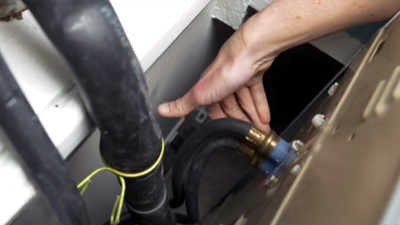
7. KITCHEN SINK & DISPOSAL
Check the kitchen sink and disposal as the final stop on your checklist. This is likely the most-used sink in the house, so keeping it in good, working order should be a priority. Make sure you check all rings and gaskets for leaks, drips, and drain blockages.

If you find any plumbing problems, big or small, and you need a professional who can come assess and fix your problem, call on Any Hour Services! Our licensed and certified plumbers can give you up-front pricing as well as peace of mind when it comes to the safety and security of your home.
OTHER HELPFUL ARTICLES:
🎙️ Listen to Our Podcast - In the House
🎥 Watch our VLOG - Along For The Ride
Copyright © 2022 by Any Hour Services

Happy Fix-A-Leak Week from Any Hour Services!
It’s Fix-A-Leak Week! But before you fix the leaks, you’ve got to find the leaks. In this video we will show you 7 places to look for water leaks. It is actually at my friend Amber’s house today. Not quite sure where she’s at. Been waiting on her for a while.
So we're going to walk you through seven areas of your home you can check for leaks that could save water, money--and even potentially a disaster down the road. Let's go check it out!
Did I mention to subscribe? Don't forget! Anyway, see you guys.
Now the biggest culprits for water leaks and wasted water are almost always found in the bathroom, so let's start there.
Make sure and check your showerhead for drips.
And don't forget to check the bathtub faucet as well. You can see mine has a slow drip, so I'm 0/1 so far. Not a very awesome start to our leak check...
But actually, the biggest water waster in any home is a leaking, running toilet. And usually the leak can be traced to a little part inside called the flapper. When this part gets either eroded or worn out, it can cause your toilet to run, which wastes a lot of water over time.
If you can hear the tank filling long after the toilet has been flushed, chances are good you've got a leaking toilet. I can't hear anything, so no leaks here!
Lastly, check the sink for leaks. We're headed into the kitchen next anyway, so I'll just show you on the sink in there.
Leaky faucets are major water wasters. Not only are you checking the faucet itself, but check all the knobs and everything around the faucet as well. And be sure to check the pipes underneath the sink. Now, it looks like I have a small water leak coming from my kitchen faucet--so, that's another leak I'm going to have to fix.
Next, we're going to check the dishwasher for any water leaks. What I like to do is check underneath for any water that might have pooled after it's been run. I like to run a paper towel underneath and check for wetness--but mine is dry so we're good!
The next appliance on our list is the washer. Having your washer leak is bad news, and a small leak can turn into a big one fast. Make sure and check behind your washer for any water leaks coming from the hoses. You may have to actually pull the washer away from the wall so you can get a really good look at those hoses to make sure they're tight and nothing is leaking.
We've checked the washer for any water leaks and it looks like we're good!
So, let's head to the water heater next.
First, you'll want to check all of the connections to the water heater to make sure there aren't any water leaks. Also, you'll definitely want to make sure the water heater isn't rusted and leaking anywhere on the unit itself. Stand back and give it a good visual inspection--check for signs of water running first. Do you see any on the top? Notice if there are any water stains on the sides or pooling at the bottom. This can actually be a sign that your water heater tank is failing--and if the tank fails, that can cause a lot of heavy damage to your home. If you find anything like that, you're going to want to get a professional out as soon as possible. Unless you've replaced a water heater before, that's probably not a project you want to tackle as a beginner. So call a plumber you trust for some help. Anyway, no signs of water leaks here, so we're good!
Let's head outside!
Now we're going to check the water spigots. First, check the handle and nozzle for water leaks and dripping. Second, check the rubber gasket inside the hose and sprayer connectors. A lot of times this rubber gasket is old and worn out, which allows for a lot of water leaks. If you do see water leaking from these connections, you're going to want to replace these gaskets. Also, I know my kids like to leave the spigot on when they're playing during the summer, which makes the sprayer leak all over the place. You'll prevent lots of water leaks and broken sprayers by turning off the spigot when they're done. I don't see any water leaks here, so we're in good shape.
And that's all 7! Many of these small leaks like sinks, faucets, and toilet flappers you can fix yourself without much difficulty. I've got a few that I need to fix myself. However, if you're in over your head, make sure you call a plumber you trust to make your home water leak free.
If you found this video about finding water leaks helpful and informative, give us a thumbs up--we really need to know if you like what we're making. If you have other questions about the major systems in your home, leave your suggestions in the comments below. Also, don't forget to subscribe! There's a big circle right there--click it and subscribe! Have a great day, and thanks for watching.
Mar 1st 2022
